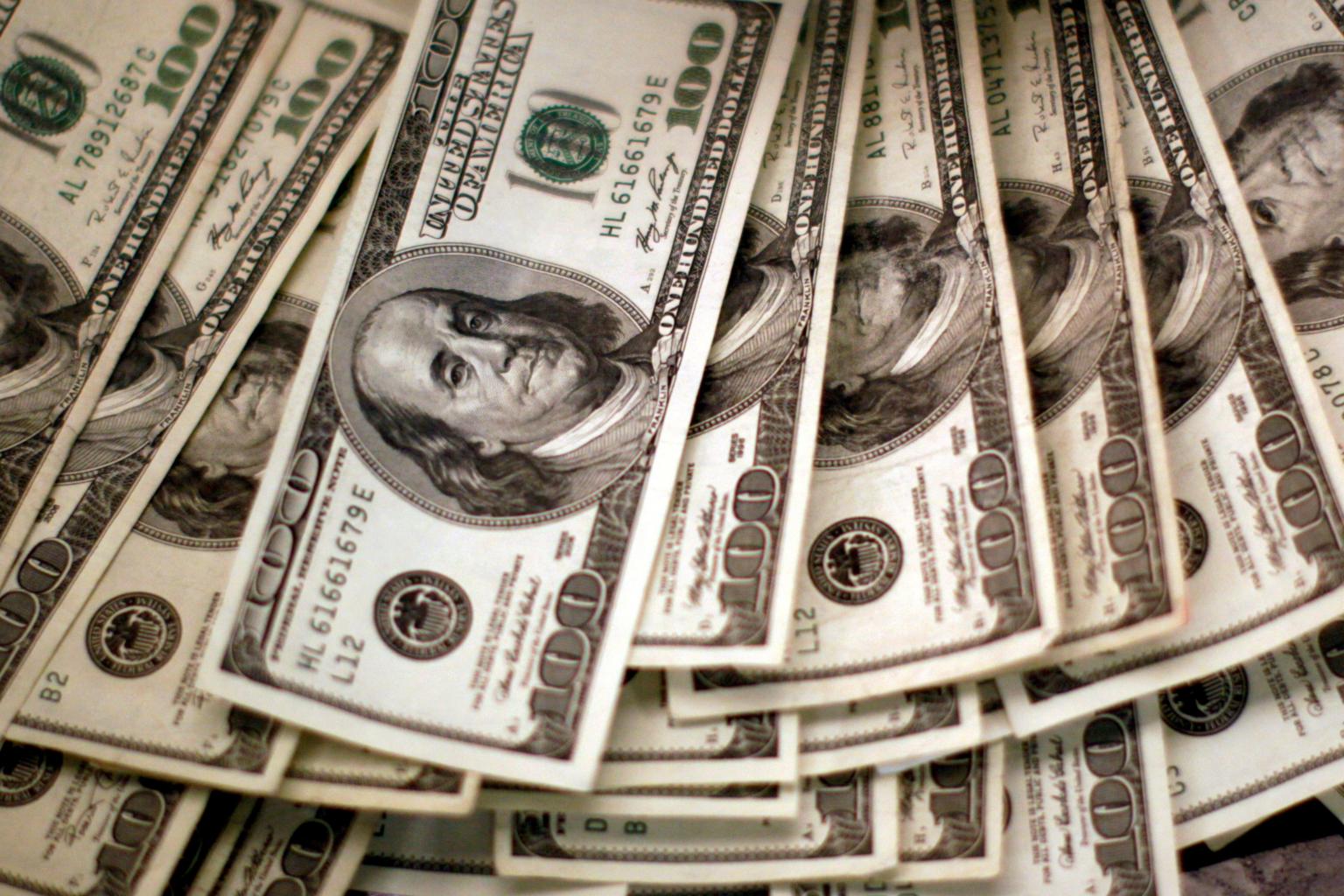US dollar stands alone as rate hikes continue to rattle Asia stocks
Sign up now: Get ST's newsletters delivered to your inbox

The US dollar made new highs on the British pound, the euro and the Australian dollar in thin morning trade.
PHOTO: REUTERS
Follow topic:
SYDNEY - Asian stocks started the final week of the quarter on the slide on Monday, while the US dollar stood ascendant, as the prospect of high interest rates and poor growth shook markets.
S&P 500 futures fell 0.2 per cent. Ahead of the Hong Kong open, MSCI's broadest index of Asia-Pacific shares outside Japan was down 0.5 per cent to a two-year low. It is heading for a monthly loss of 10 per cent, the largest since March 2020.
Japan's Nikkei fell 2 per cent, South Korea's Kospi hit a two-year low with a 1.8 per cent plunge and Australia's ASX 200 fell 1.4 per cent to a three-month low, with global demand fears weighing heavily on mining stocks.
The US dollar made new highs on the British pound, the euro and the Australian dollar in thin morning trade.
Last week, stocks and bonds crumbled after the United States and half a dozen other countries raised rates and projected pain ahead. Japan intervened in currency trade to support the yen, while investors lost confidence in Britain's economic management.
The Nasdaq lost more than 5 per cent for the second week running. The S&P 500 fell 4.8 per cent.
"A weekend of reflection has not led anybody to change their opinion," said National Australia Bank's head of currency strategy, Mr Ray Attrill, in Sydney. "It is a case of shoot first and ask questions later, as far as UK assets are concerned."
Gilts - British government bonds - suffered their heaviest selling in three decades on Friday and on Monday, the pound slid to a 37-year low at US$1.0765 as investors reckon that planned tax cuts will stretch government finances to the limit.
Five-year gilt yields rose 94 basis points last week, by far the biggest weekly jump recorded in Refinitiv data stretching back to the mid-1980s. US Treasuries tanked as well last week, with two-year yields up 35 basis points to 4.214 per cent and benchmark 10-year yields up 25 basis points to 3.697 per cent.
The euro wobbled to a two-decade low at US$0.9660 as risks rise of war escalating in Ukraine, before steadying at US$0.9686.
In Italy, a right-wing alliance led by Ms Giorgia Meloni's Brothers of Italy party was on course for a clear majority in the next Parliament, as expected. Some took heart from a middling performance by eurosceptics The League.
"I expect relatively little impact considering that the League, the party with the least pro-European stance, seems to have come out weak," said Mr Giuseppe Sersale, fund manager and strategist at Anthilia in Milan.
Other currencies were nursing losses. The Australian dollar touched US$0.6510, its lowest since mid-2020.
The yen hovered at 143.47 with worries over possible further intervention keeping it from losses. Japan intervened in the foreign exchange market on Thursday to buy yen for the first time since 1998.
The Singapore dollar held relatively steady against the US dollar on Monday. It was trading at 1.4319 to the greenback, edging down 0.07 per cent, at 8.41am local time.
Oil and gold steadied after drops against the rising dollar last week. Gold hit a more than two-year low on Friday and was US$1,643 an ounce on Monday. Brent crude futures rose 71 cents to US$86.86 a barrel. REUTERS

